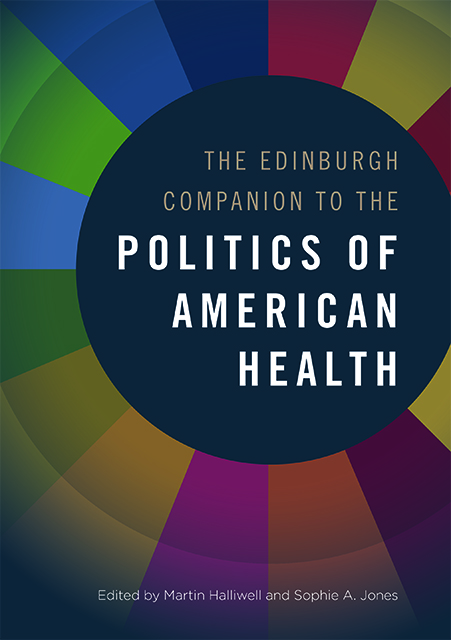Book contents
- Frontmatter
- List of Contents
- Notes on Contributors
- Introduction: The Political Landscapes of American Health, 1945–2020
- I Geography, Community and American Health
- II Critical Health Conditions: Debates and Histories
- III The Politics of Children's Health
- IV The Institutional Matrix of Health Care
- V The White House, Congress and Health Reform
- VI Justice, Ethics and American Health
- VII Public Health and Global Health
- General Bibliography
- Index
33 - Bioterrorism, Pandemic and the American Public
Published online by Cambridge University Press: 12 August 2023
- Frontmatter
- List of Contents
- Notes on Contributors
- Introduction: The Political Landscapes of American Health, 1945–2020
- I Geography, Community and American Health
- II Critical Health Conditions: Debates and Histories
- III The Politics of Children's Health
- IV The Institutional Matrix of Health Care
- V The White House, Congress and Health Reform
- VI Justice, Ethics and American Health
- VII Public Health and Global Health
- General Bibliography
- Index
Summary
On 1 March 2020, as people around the world scrolled through local and national news to track the global spread of a new coronavirus, The Guardian published the story of a Colorado mountain town that in 1918 – seemingly miraculously – had reported no cases of influenza in the first waves of that outbreak. No one died of flu in Gunnison, a town of 1300 people which sat at the crossroads of two railroad lines connecting it to urban centres and numerous small towns struck by the disease. In October 1918, Gunnison acted swiftly upon news that the influenza had reached Colorado, enacting strict quarantine measures. As Guardian reporter Rory Carroll argued, ‘Gunnison relied on the guidance and authority of local newspapers, doctors and police – a trust in institutions that may now seem quaint – and on people's capacity for patience. And on luck.’ When Gunnison closed its roads and railroad lines, there were no cases in the town, and for four months no one was allowed to enter without undergoing quarantine. Full authority over the quarantine was given to the town doctor and enforced by the sheriff's office. Each week, the local newspaper featured news of the pandemic in its headlines, connecting the community to news of the virus, while keeping public support for the quarantine intact.
A century later, on 12 March 2020, the descendant of that newspaper, the Gunnison Country Times, reported three cases of Covid-19 in Gunnison County, among the first cases in Colorado. It seemed that luck would not be with this mountain town this time around. While the story of 1918 Gunnison was circulated through global media as a model pandemic response, Covid-19 case rates in 2020 Gunnison climbed. By the end of March, Gunnison County had the fifth-highest rate of SARS-CoV-2 infection, per capita, of any county in the United States. What had changed in Gunnison since 1918? The mining economy of the early twentieth century in the Rocky Mountains had given way to a world-renowned ski industry, tying the remote mountain community to a globalized society and building a local economic system rooted in leisure travel. However, the mining industry also drew workers from around the globe and relied upon human interactions and transportation systems like unto the tourism industry. More than Gunnison changing, the world has changed since 1918, rendering obsolete the circumstances that could sustain a four-month quarantine.
- Type
- Chapter
- Information
- The Edinburgh Companion to the Politics of American Health , pp. 569 - 584Publisher: Edinburgh University PressPrint publication year: 2022



